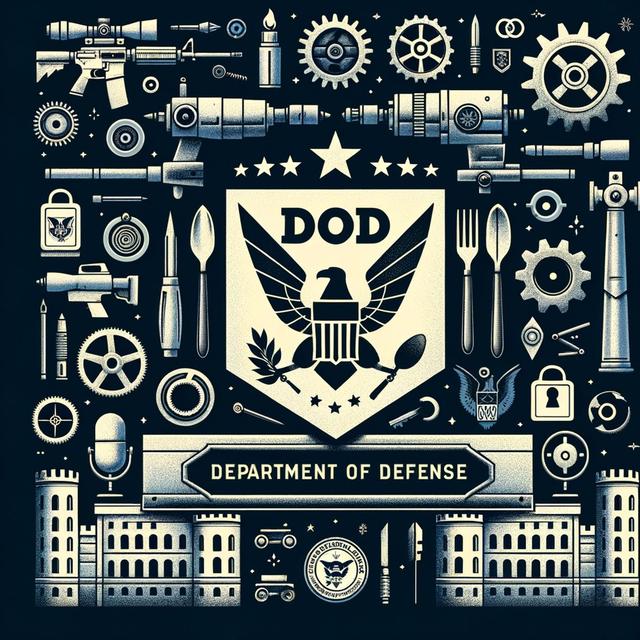
FY 2025 NDAA Updates: Cloud ATO Reciprocity, JWCC Transition, and Defense Tech Investment
Jan 27, 2025•4 min
Episode description
Welcome to our podcast on the latest news and developments from the Department of Defense. This week, we're focusing on key provisions from the Fiscal Year 2025 National Defense Authorization Act (NDAA) and other significant updates.
The most significant headline this week is the signing of the FY 2025 NDAA, which brings about several critical changes for government contractors and the defense sector. The act takes a narrower approach to acquisition policy and supply chain changes than expected but still introduces consequential changes for contractors[1].
One of the key developments is the requirement for the Department of Defense (DoD) to update its Authorization to Operate (ATO) processes for cloud capabilities. Specifically, DoD must develop a policy that allows officials to accept security analysis and artifacts of a cloud capability that has already been authorized by another DoD official or component. This aims to enhance reciprocity between DoD components' ATO processes and speed up the adoption of cloud capabilities. The policy must be implemented by June 21, 2025[1].
Additionally, the FY 2025 NDAA fences 5% of funds authorized for the Joint Warfighting Cloud Capability (JWCC) contract until DoD provides a plan to transition away from the JWCC contract, including details on minimizing or ceasing development and timelines for transitioning to successor contracts[1].
The act also emphasizes the importance of science and technology, authorizing $143.8 billion in research, development, test, and evaluation to meet immediate and projected force protection challenges. It includes $17.5 billion for science and technology programs, with $100 million dedicated to research at Historically Black Colleges and Universities (HBCUs) and Minority Serving Institutions[4].
In terms of public health and safety, the DoD continues to enhance its preparedness and response capabilities. The Defense Health Agency (DHA) plays a crucial role in coordinating and synchronizing public health emergency responses across the services. DHA's all-hazards biosurveillance efforts provide early warning and situational awareness of potential bio-threats to the force, enabling effective planning and decision-making[5].
Looking ahead, the DoD is set to develop a multi-cloud strategy by June 21, 2025, and submit it to the congressional defense committees by August 20, 2025. This strategy will be crucial in enhancing the department's cloud capabilities and ensuring the security of its data[1].
For more information on these developments and how they impact American citizens, businesses, and state and local governments, visit the official DoD website. The public can also engage by following updates from the DoD and providing feedback on proposed policies and initiatives.
Next steps to watch include the implementation of the new ATO policy and the transition plan for the JWCC contract. Stay tuned for further updates on these critical developments in the defense sector. Thank you for joining us today.
The most significant headline this week is the signing of the FY 2025 NDAA, which brings about several critical changes for government contractors and the defense sector. The act takes a narrower approach to acquisition policy and supply chain changes than expected but still introduces consequential changes for contractors[1].
One of the key developments is the requirement for the Department of Defense (DoD) to update its Authorization to Operate (ATO) processes for cloud capabilities. Specifically, DoD must develop a policy that allows officials to accept security analysis and artifacts of a cloud capability that has already been authorized by another DoD official or component. This aims to enhance reciprocity between DoD components' ATO processes and speed up the adoption of cloud capabilities. The policy must be implemented by June 21, 2025[1].
Additionally, the FY 2025 NDAA fences 5% of funds authorized for the Joint Warfighting Cloud Capability (JWCC) contract until DoD provides a plan to transition away from the JWCC contract, including details on minimizing or ceasing development and timelines for transitioning to successor contracts[1].
The act also emphasizes the importance of science and technology, authorizing $143.8 billion in research, development, test, and evaluation to meet immediate and projected force protection challenges. It includes $17.5 billion for science and technology programs, with $100 million dedicated to research at Historically Black Colleges and Universities (HBCUs) and Minority Serving Institutions[4].
In terms of public health and safety, the DoD continues to enhance its preparedness and response capabilities. The Defense Health Agency (DHA) plays a crucial role in coordinating and synchronizing public health emergency responses across the services. DHA's all-hazards biosurveillance efforts provide early warning and situational awareness of potential bio-threats to the force, enabling effective planning and decision-making[5].
Looking ahead, the DoD is set to develop a multi-cloud strategy by June 21, 2025, and submit it to the congressional defense committees by August 20, 2025. This strategy will be crucial in enhancing the department's cloud capabilities and ensuring the security of its data[1].
For more information on these developments and how they impact American citizens, businesses, and state and local governments, visit the official DoD website. The public can also engage by following updates from the DoD and providing feedback on proposed policies and initiatives.
Next steps to watch include the implementation of the new ATO policy and the transition plan for the JWCC contract. Stay tuned for further updates on these critical developments in the defense sector. Thank you for joining us today.
For the best experience, listen in Metacast app for iOS or Android
Open in Metacast